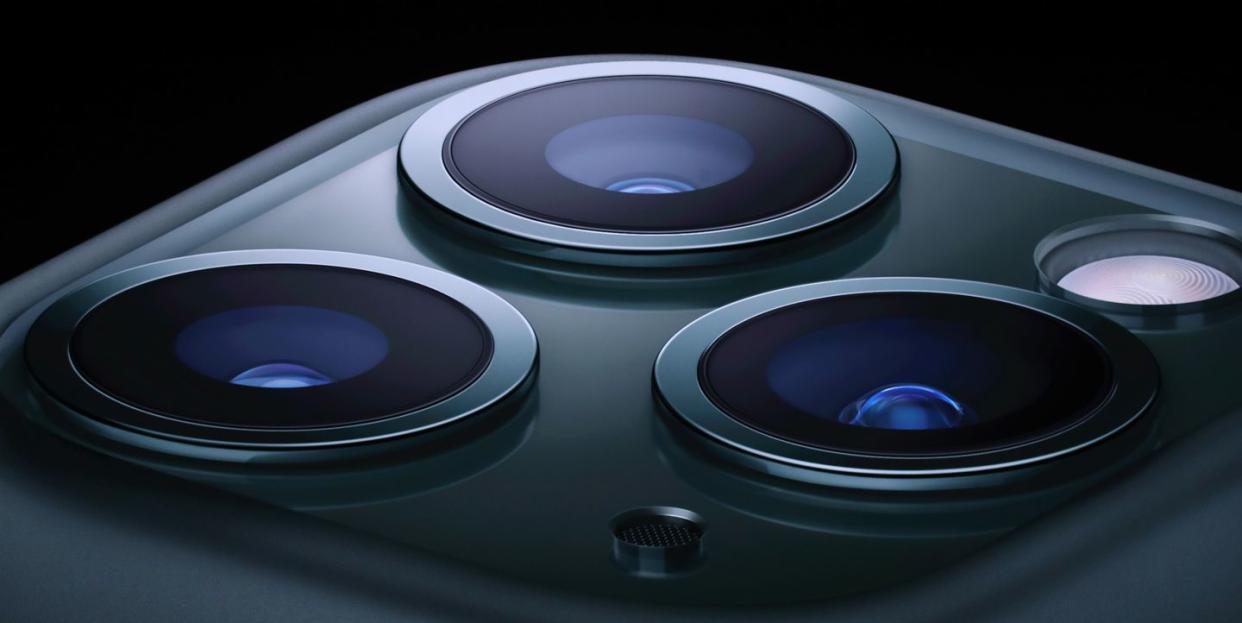The Psychological Reason Why People Are Disturbed by the New iPhone Design

Apple just revealed its new iPhone models, and there’s a change in design to several of the phones’ photography features.
The Pro and Pro Max phones actually feature three camera lenses, which is triggering trypophobia, a strong fear of small holes and clusters of circles, in some people.
Psychologists explain what may cause trypophobia and how common it is.
Apple just revealed its new iPhone models, and there’s a change in design to several of the phones’ photography features. The Pro and Pro Max phones actually feature three camera lenses, and, while plenty of people are excited about what that can mean for their future photos, others are a little upset about it.
Some people on Twitter say that the new camera design triggers their trypophobia, which is a strong fear of small holes and clusters of circles.
Apple did not think of us that have TRYPOPHOBIA when making the iphone 11 pro. I cant buy it and be itchy all over every damn time I look at it.
— Mrs. Ummeeta Rabiu (@ummeetaa_x) September 11, 2019
My trypophobia will never allow me to own this iPhone. Skip! pic.twitter.com/Qtbnu0qEs0
— Ashley Tjipitua (@ashleytjipitua) September 11, 2019
The new iPhone is creeping me TF out with the 3 little cameras. #Trypophobia pic.twitter.com/9qirqMtz1k
— Christine Emmanuelle (@MiSsChRiS710) September 10, 2019
But how common is trypophobia, and what causes it? We talked to psychologists to find out.
What is trypophobia, exactly?
There isn’t a lot of research on trypophobia, but it’s not an uncommon phobia. One study published in the journal Psychological Science showed about 300 men and women images that can freak out people with trypophobia (like lotus heads) and found that nearly one in five women and one in 10 men had negative reaction to the pictures.
“Specific phobias—of which this would be considered one—are fairly common,” says licensed clinical psychologist Alicia H. Clark, PsyD, author of Hack Your Anxiety. “People who are prone to anxiety tend to be prone to phobias of all sorts. And the kicker with phobias is that the more a feared situation is identified, thought about, and avoided, the stronger the fear of it becomes.”
What causes trypophobia?
Experts don’t really know, but there are some theories. “Some researchers believe that our human capacity for imagination is to blame whereas other suggest there are genetic and physiological underpinnings as well,” Clark says.
Typically, phobias are linked to some element of danger, says Simon Rego, PsyD, director of psychology training and the cognitive behavioral therapy training program at New York’s Montefiore Medical Center/Albert Einstein College of Medicine. In this case, trypophobia may remind people of the eyes of a spider (which can be venomous) or holes where an aggressive animal could hide.
How is trypophobia treated?
People can have varying degrees of trypophobia. Some may just not like to see holes, while others can be completely scared by them. For those who are just turned off by holes, their trypophobia may not even need treatment.
For others, cognitive behavioral therapy (CBT) can be helpful, says Clark. That involves figuring out how the phobia is negatively impacting your life, and coming up with a plan of action to gradually expose you to things that set off your phobia until you feel more comfortable around holes. That could mean looking at photos of things that bother you, moving on to those things in real life, and eventually even touching them. Over time, Clark says, the trypophobia should get better.
Like what you just read? You’ll love our magazine! Go here to subscribe. Don’t miss a thing by downloading Apple News here and liking Prevention. Oh, and we’re on Instagram too.
You Might Also Like
